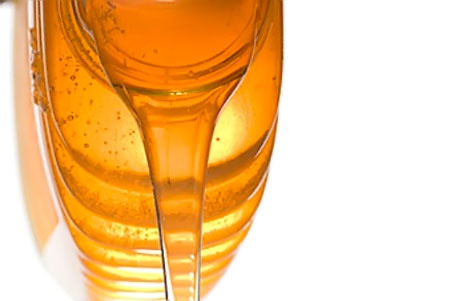
In 1957, Richard O. Marshall and Earl R. Kooi developed a process to convert some of the glucose of corn syrup to fructose to tailor its level of sweetness.
The corn syrup is made by first steeping kernels of corn in a solution of 122°F-140°F water and a small percentage of sulfur dioxide – to prevent excessive bacterial growth – for 30-40 hours. This hydrates the kernels, more than doubling their size and breaks gluten bonds down to release starch.
The steeping water, which then contains nutrients as a result of the process, is condensed for use in animal feed and fermentation processes. The kernels are coarsely ground to break the germ down, then spun in cyclone germ separators. First, the germ is pumped onto screens and has the starch washed off it, then it’s sent through chemical and mechanical processes to extract corn oil, which is then refined. The germ residue is used in animal feed.
The corn and starch are then sent through a second, more intensive milling process that releases the starch and gluten from the fiber in the kernel. The fiber is screened out, milled again, then piped off to – you guessed it – become animal feed. The starch and gluten that remains is piped off to a starch separator.
In this next centrifuge, gluten and starch separate easily. The gluten is sent off to become, yes, animal feed. The starch is diluted, washed 8-14 times to remove any residual gluten protein, and then rediluted and washed again to produce high quality starch. Some of this starch is dried and sold as unmodified corn starch, and the rest converted into corn syrups and dextrose – also known as D-glucose.
The starch, in a water suspension, is treated with enzymes – namely alpha-amylase, which is derived from a bacteria – to break down long chemical chains of pure glucose into shorter chains called polysaccharides. Then these shorter chains are treated with an enzyme, glucoamylase – which is derived from from a fungus called Aspergillus. This fermentation converts the mixture, or “slurry” into almost pure glucose. If other sugars like maltose are desired, different combinations of enzymes and acids are used, for varying times.
This glucose mixture is then poured over columns containing an enzyme called glucose-isomerase, which converts the pure glucose into a glucose-fructose mixture. This is then distilled to a 90% fructose solution using a process called liquid chromatography.
This higher fructose liquid is then blended back into the original mixture to net out at a solution of 55% fructose and 45% glucose: known in the industry as high fructose corn syrup or HFCS.
Despite the complicated process and high cost of at least one key ingredient – the glucose-isomerase – HFCS is often a cheaper ingredient than sugar for manufacturers for several reasons. Because it can be produced domestically, it is not subject to the USDA tariffs and quotas that drive up the price of cane sugar. It can also easily be packed into tankers and driven across country. Additionally, corn subsidies to US farmers – $3,975,606,299 in 2009 alone – make corn a cheap and plentiful commodity.
And because of its relative inexpensiveness, high fructose corn syrup is a common sweetening agent in countless packaged foods, from soft drinks and baked goods, to tomato sauce, salad dressings, jellies and ketchup.
That makes for some pretty sweet business for the makers of “corn sugar”– as the Corn Refiners Association is now lobbying the Food and Drug Administration to call the stuff.
